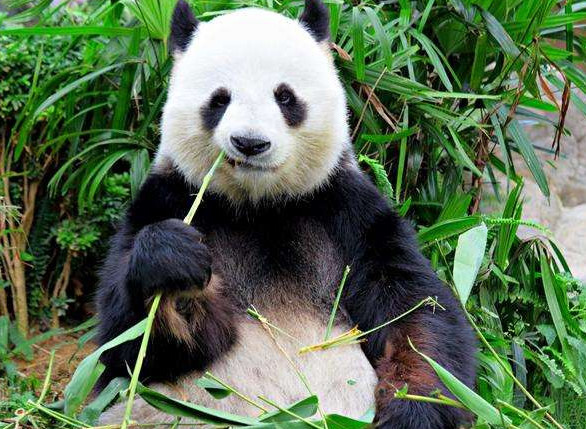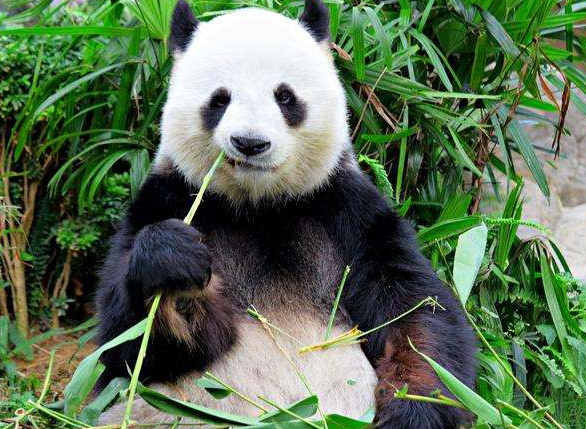By Zhang Wen, Huan Xiang from People’s Daily

A panda is eating bamboo. (Photo from Chengdu Research Base of Giant Panda Breeding)
Chinese scientists have made progress in revealing more details of giant pandas’ feeding habits and why they eat different varieties of bamboos rather than meat although their teeth and the construction of digestive tube is similar to carnivores.
Wide distribution of bamboos in the wild and the easy access are two major reasons for giant pandas’ staple choice, according to Zhang Wenping, a researcher at the Chengdu Research Base of Giant Panda Breeding.
In addition, bamboos contain more starch the species needs than other woody plants, Zhang said, adding that the starch content of different parts of the bamboo varies with the change of seasons, and giant pandas always choose the parts with the highest content correspondingly.
An analysis on their fecal also found that giant pandas are not able to obtain energy from celluloses, since their intestinal flora are incapable of degrading the celluloses in bamboo.
The research also proved that starch, hemicelluloses and pectin in the bamboo are the major sources of energy for giant pandas.
Bamboo shoots are the part with the highest starch and hemicelluloses content. They yield two crops a year at a time when giant pandas copulate.
The starch and hemicelluloses in the shoots can energize and put weight on giant pandas for their reproduction. The shoots, therefore, become a prioritized choice of the creatures during the mating season.
However, when winter comes, giant pandas begin to eat bamboo poles, as there is no bamboo shoot or tender leaves in the season, while the starch and soluble sugar content in poles reach the peak of a year.
The findings were published on the International Society for Microbial Ecology Journal, an international flagship journal of microbial ecology, on Feb. 1, 2018.
Wide distribution of bamboos in the wild and the easy access are two major reasons for giant pandas’ staple choice, according to Zhang Wenping, a researcher at the Chengdu Research Base of Giant Panda Breeding.
In addition, bamboos contain more starch the species needs than other woody plants, Zhang said, adding that the starch content of different parts of the bamboo varies with the change of seasons, and giant pandas always choose the parts with the highest content correspondingly.
An analysis on their fecal also found that giant pandas are not able to obtain energy from celluloses, since their intestinal flora are incapable of degrading the celluloses in bamboo.
The research also proved that starch, hemicelluloses and pectin in the bamboo are the major sources of energy for giant pandas.
Bamboo shoots are the part with the highest starch and hemicelluloses content. They yield two crops a year at a time when giant pandas copulate.
The starch and hemicelluloses in the shoots can energize and put weight on giant pandas for their reproduction. The shoots, therefore, become a prioritized choice of the creatures during the mating season.
However, when winter comes, giant pandas begin to eat bamboo poles, as there is no bamboo shoot or tender leaves in the season, while the starch and soluble sugar content in poles reach the peak of a year.
The findings were published on the International Society for Microbial Ecology Journal, an international flagship journal of microbial ecology, on Feb. 1, 2018.
 Menu
Menu
 Why do giant pandas prefer bamboo to meat?
Why do giant pandas prefer bamboo to meat?
















